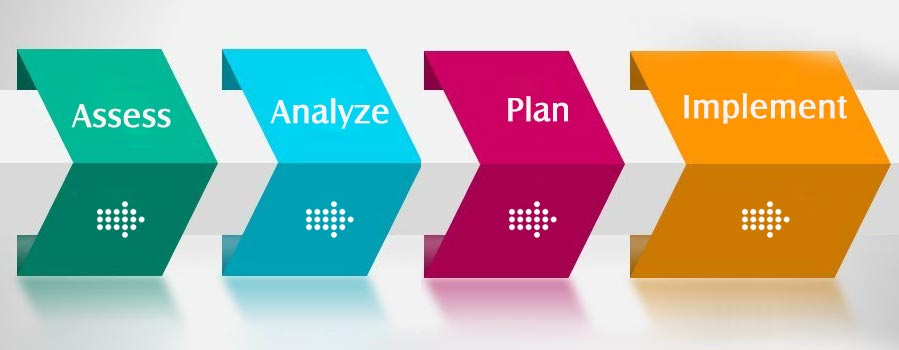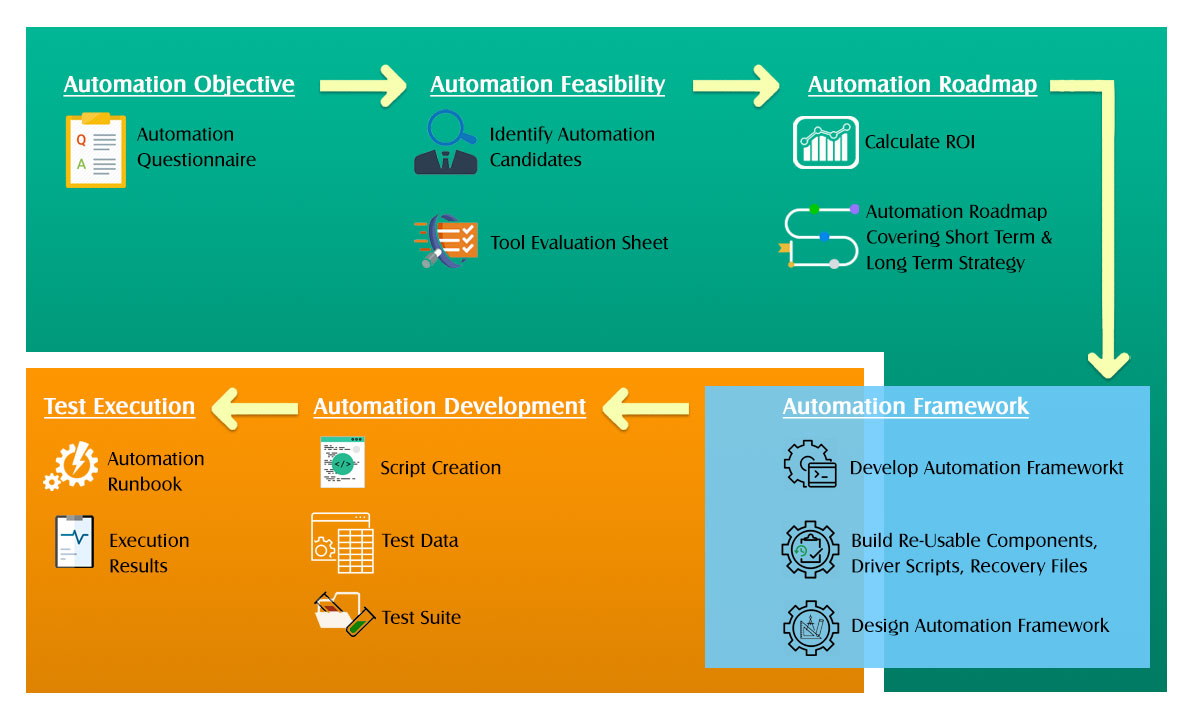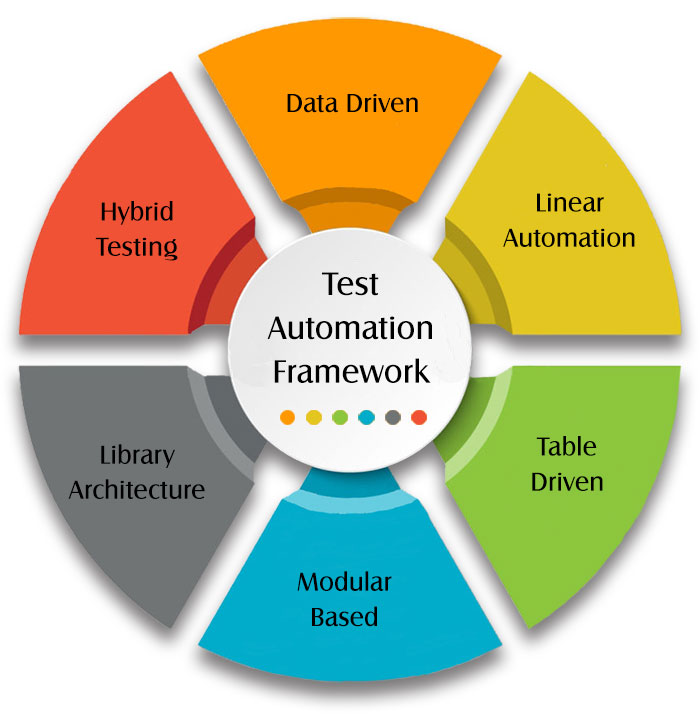Introduction
In today’s digital ecosystem, organizations are rapidly adopting digital transformation to provide customer-centric and quality-driven solutions, which introduces new challenges in product testing and quality assurance. This necessitates the organizations to have faster release cycle times, reduced costs, and the best-in-class user experiences.
With multiple business domains integrating Digital Transformation, it is a must for the companies to focus on quality engineering. As a result, the businesses are outsourcing Quality Engineering Service (QES) to meet the customer expectations. The QES companies assist businesses throughout the product lifecycle, from requirement gathering to test case development and execution, to post-deployment support. They ensure agility, operational excellence, and high product quality.
Moving from Quality Assurance to Quality Engineering
What is the difference between QA and QE? Quality assurance ‘assures’ the quality of the product, whereas Quality engineering is a holistic approach that deals with product development and quality management across the product development cycle.
Quality engineering warrants a cultural shift within the teams to provide the best in class quality products.
In quality engineering, the quality team works in tandem with the business users and the product owners to gather all the requirements and report any bugs during the early development phase. They ensure that quality is prioritized throughout the product development journey and that it remains in focus not only till but even after the product deployment.
With quality engineering in place, you can swiftly validate your application, and eventually release the product. This aids cost savings and faster time to market. This way, you can get the customer feedback early and resolve any issue before it becomes critical, giving you yet another reason to satisfy your customer. So let’s discuss what quality engineering is all about.
What is Quality Engineering?
Quality engineering is a continuous process where testing is performed from start till the end of the development process. It comprises a set of methods for system development to ensure that the products or services are designed and developed to meet the customer requirements.
Quality engineering is a holistic approach where the developers and the testers work together. It entails a team-wide cultural shift, for them to adopt quality engineering as a regular practice. To implement quality engineering, the approach must be accepted as cross-sectional and inter-departmental from the top down. With this, an actual framework should also be built to ensure that the cultural shift is seamless and consistent throughout the organization.
Let’s get into the details of Agile, DevOps and Shift-Left Testing approach for effective test management.
Various Approaches of Quality Engineering
Agile
Quality engineering encompasses Agile and DevOps for product testing life cycle. Agile is an end to end product development methodology, while DevOps is a cultural approach to improve the existing work processes.
In the Agile model, the product quality is considered from the design phase itself, and testing takes place parallel to development. The automation test cases are pre-defined for the testers to validate the functionality during the product development stage. The product is tested for functionality, usability, Application Programming Interface (API) integration, and final deployment.
RELATED BLOG
DevOps
Enhanced collaboration between various teams drives DevOps. It includes re-training and improving the workforce skills. It also generates value for businesses and customers through frequent Agile deployments. The companies must attain a certain level of maturity for successful implementation of DevOps with agility.

Shift Left Testing
In the old waterfall model, where the testing is performed after the product development, a small change can lead to a lot of rework and testing. Even in the Agile-based project, the testers solely test the user stories without involving the development teams.
In the Shift left testing approach, quality is prioritized at the beginning of the application development cycle and not at the conclusion. The executable codes are verified during the early stages of the development cycles, and the functionality is tested at every step. Once the automated test cases are ready, they are executed to validate their functionality and detect bugs.
For automating the tests, you should employ a test automation assessment approach and processes that facilitate the testing.
Test Automation Assessment Approach
The test automation approach for assessing the test executables consists of the following components:

- Assess the product system architecture and the process flow, including the current automation limitations and challenges. Assess the test automation environment and the production environment.
- Analyze the development process, the technology landscape, the testing requirements, and the simulation or virtualization needs.
- Plan for the required automation tools, the reusable components and developing the in -house automation tools.
- Implement a pilot project. Build a QA implementation team, and measure the progress throught daily team meetings.
Test Automation Assessment Process
The test automation assessment process includes setting the automation objective, feasibility analysis, roadmap planning, framework designing, automation development, and test execution.

1. Define Automation Objective
During the early test automation stages, the requirements are recorded based on a set of questions. The questionnaire outlines the key aspects of the product that will be evaluated. The objectives are set based on the needs.
2. Check Automation Feasibility
The automation objectives are checked for feasibility by analyzing the critical requirements. The automation candidates are identified based on their specific domain expertise and experience. An evaluation sheet is created on the required tools and technology.
3. Build Automation Roadmap
While designing the roadmap, the short-term and the long-term strategies are planned carefully, so that the set objectives are met in time. This also includes calculating the Return On Investment (ROI), investment requirements, and forecasting.
4. Design and Develop Automation Framework
An automation framework is designed and developed for executing the required test cases. The focus is on creating re-usable components, drivers, scripts, and recovery files.
5. Automation Development
At the automation development phase, the test scripts are created, and the test data is gathered for executing the test cases.
6. Test Execution
Once the test framework and the test script are ready, the test cases are executed and automated. The test results are recorded and validated to provide a quality product.
Quality engineering test assessment approach emphasizes more on the test automation frameworks. The test automation frameworks are made up of various tools and technologies that allow for faster end to end product testing. The dedicated automation frameworks and tools help in speeding up the testing process and improve the ROI by minimizing the testing efforts.
The test automation frameworks are required to run the same script or command multiple times with different builds to test the application. An application is tested for multiple scenarios. If you create individual scripts for each scenario, your test suite will become quite large, and if the application or any of the objects’ properties change, you’ll have to modify all the scripts. Hence, to resolve this problem, you need test frameworks that allow you to reuse the code in different scenarios, a feature called code reusability.
Let’s take a look at what a test automation framework is and its various types.
Test Automation Framework
Test automation is one of the fundamental principles of quality engineering. It is a procedure that uses automation tools to execute the test cases. The platform which provides the test execution environment is called the Test Automation Framework. The framework consists of a set of protocols, rules, procedures, and guidelines for test scripting, association, and implementation.
There are several test automation frameworks developed by various test automation companies. Let us discuss them in brief.

1. Data-Driven Framework
The framework uses a spreadsheet to develop the test cases that are then imported into the test automation tool. Using this framework, you can build positive as well as negative test cases into a single test.
2. Linear Automation Framework
Using the linear automation framework, you can generate scripts in no time. It doesn’t require any specific knowledge to execute the test cases. The linear automation testing tool is easy to understand and use. This framework is also called as “Record & Playback Framework.”
3. Table Driven Framework
The table-driven testing or keyword-driven testing is used for both automation and manual testing requirements. The testing is keyword-based that are related to the application to be tested.
4. Modular Based Testing Framework
It is an essential automation tool that allows for the testers to break down the application under test into separate units or modules so that each one may be tested individually. Hence, it is also called the ‘Test Script Modularity Framework’.
5. Library Architecture Testing Framework
The library architecture framework creates a shared library that contains the standard functions for the application to be tested, and these libraries are available for use, whenever required. This framework is used for the applications where everyday activities are repeated, such as inventory management systems.
6. Hybrid Testing Framework
As the name suggests, the hybrid testing framework consists of more than one framework. The framework is designed to mitigate the flaws of all the associated frameworks while maximizing their benefits. This framework can easily be modified to improve the outcomes.
RELATED BLOG
Advantages of Employing Automated Frameworks
The automated framework provides the following benefits.
- Consistent Testing Throughout The Product Development Cycle
- Low Operating and Maintenance Cost
- Reusable Codes for Future Testing
- Distinctive Programmability and Shelf Life
- Minimal Manual Intervention
Benefits of Outsourcing QE Services
Outsourcing to a Quality Engineering Service Provider not only helps in reducing the operational costs but also adds value throughout the product development cycle by incorporating new skills, methodologies, and testing technologies. The increased need for customized, smarter, and sustainable products is prompting businesses to invest in Agile-based testing.
The quality of the end product is a big benefit that a Quality Engineering Service Provider may offer. Let us discuss some of the significant benefits that a Quality engineering service company can provide:
1. Latest Tools and Technology
An experienced quality engineering partner can assist you across the product life cycle. With their dedicated quality engineers, they can map the testing requirements and create various test cases. Based on the project requirements and the data available, they can help in designing the test automation framework and choosing the suitable tools and technologies.
2. Seamless Communication
The quality assurance team helps you in building communication channels that keep all the interested stakeholders updated at each product development stage. Starting from testing requirement gathering to framework selection, and deployment, the team operates in an agile environment. The digital communication channels like video conferencing and remote monitoring make testing operations seamless and efficient.
3. Test Automation Frameworks
QES can provide you with the dedicated test automation framework suitable for the application to create a desired test environment. The test automation framework offers code reusability and functions with minimum manual intervention to ensure the least error probability. This ultimately reduces the number of release cycles, improves the test efficiency, and assures the highest end product quality.
4. Technical Capabilities
The crucial advantage of outsourcing a quality engineering service provider is its core technical capabilities. The quality assurance team defines the necessary guidelines to develop a testing framework and execute the test cases to ensure quality excellence across the organization. The group conducts quality audit regularly to guarantee that all the parameters are correctly executed. They also communicate with the clients for their specific quality requirements and process compliance.
They can also help you with the right set of tools and technologies to create a desired testing environment. This will enable your development team to focus on the core activities leaving behind the quality work to the QE team. This is how you can save development, testing, and deployment time, and ultimately save money.
5. Technical Support
In addition to the domain experience and the resource benefits, the quality engineering service provider offers continuous support for quality checks as per the need. While your developers sleep, the QA team conducts extensive tests through the night and builds test reports to make any advancements or bug fixes. This continual effort from the dedicated quality engineers helps to deliver products faster to the market without incurring any automation cost.
Quality Engineering Success Stories
One of the leading medical device manufacturers in the USA had developed a ventricular support device to assist cardiac circulation. The support device consisted of multiple variants and controllers for monitoring the device performance and functionality. However, the client was facing challenges with the time to market as the testing process was manual, and that led to a higher number of product release cycles for each product variant.
Team eInfochips helped the client by implementing the test automation to test variants of the medical device. The test automation helped the client to automate the test cases by 52%, and they were able to save about 62% of their efforts. The team also helped with cloud integration by the deployment of the Azure cloud. With this, remote diagnostics and media streaming from the device to the portal were also implemented for 24*7 patient monitoring.
Conclusion
By continually validating the product attribute across the development life cycle, an integrated quality engineering approach is critical to reduce the production expectations and delivery gaps. eInfochips provides end to end engineering services throughout the product development lifecycle. We offer testing services from test consulting, implementation to deployment, and after deployment support through our open-source tool expertise, Shift left, DevOps, and Agile approach.
Connect us today for Product & IoT Testing, Device to Cloud Testing, Cognitive QA, Mobile & Web Testing, and Quality Process Consulting Services.












